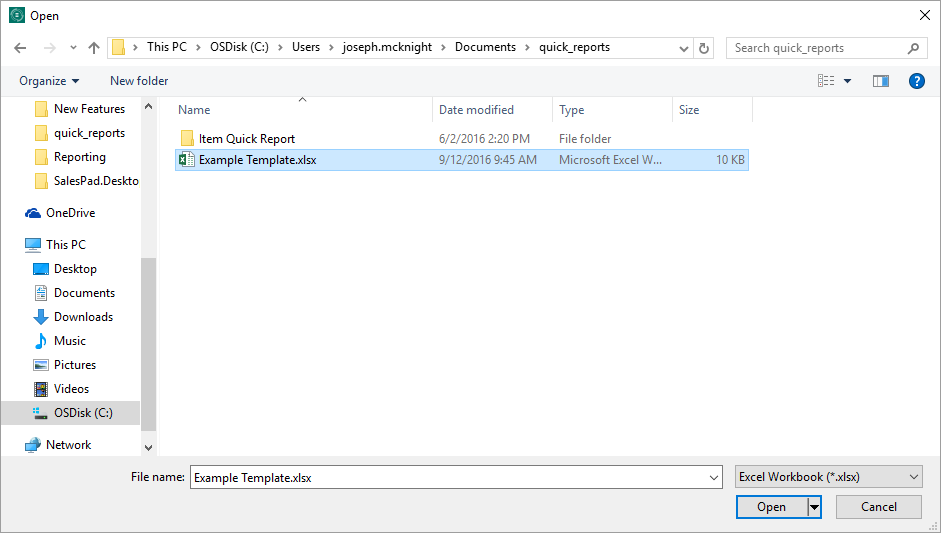Overview
Excel Export to Template is a function for Quick Reports that allows users to export quick reports into an Excel file that has been setup in advance. Users can use this function to export SalesPad Quick Report data to a more universal format. In this document, you will learn how to format an Excel file into a Quick Report template, how to associate an Excel template with a quick report, and how to use the function. There are no securities or settings related to this function.
Excel Template
Requirements
For this to work, the quick report must be saved as a file on the hard drive. There must also be an Excel template stored in the same folder as the quick report. Additionally, the quick report cannot be a pivot grid; it must be a standard grid. This template must be a standard Excel file; it should not be saved as an Excel Template file.
Tags
There are 2 types of string tags for marking cells: Tags that pull straight from the quick report and tags that pull when the export is run from one of the quick reports tabs. These tabs are located in the Customer Card, Inventory Card, Sales Document, Equipment Management, Purchase Order, Sales Line, and Vendor Card.
The tags that pull straight from the quick report are formatted as shown below.
<QuickReport:column name>
Column name can be replaced by any of the column names in the quick report’s query. When these tags are merged into the excel file, SalesPad will first determine how many rows of cells within the Excel file are associated with a single row of quick report results by finding the first and last quick report data tags. Each tag within the block is then replaced by one row of results, then the block of cells is copied and populated by the next row of results until all of the results have been inserted into the quick report.
Tags that pull when the export is run in a certain tab are formatted as shown below.
<object type name:column name>
The object type name is the object that the tab is located in. Customer, SalesDocument, or ItemMaster, for example. Column names can be found by looking at the SalesPad SQL views for those objects. Customer_Name, Sales_Person_ID, and Item_Number are corresponding examples.
Here is an example of what a finished sheet may look like:

Assigning a Template to a Quick Report
To assign a specific template to a quick report, mark it in the report’s xml header tag using the attribute ExcelTemplate.

Usage
When viewing a quick report, press the Export to Template button to send the Quick Report information to the assigned Excel template. If no template is assigned, then a dialog will display asking a user to select an Excel template to use instead. This dialog does not assign the chosen template to the quick report.

Once the template is chosen, Excel will open the file with the data from the Quick Report. You can then save the new excel file.
SalesPad Support
Comments
Jeff Timmons
Although helpful as a start, I was hoping I would find a bit more information. I am currently suffering from all my data being exported as text when I use the Export to Template functionality. Dates, integers, and decimal values are all coming into Excel as character strings (they have a ' to start the cell value). If I take the same quick report and simply use Export the resulting spreadsheet has these columns formatted correctly. A bit more detailed description of the Export to Template would be quite beneficial.